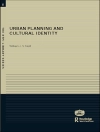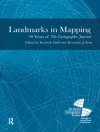This volume is a comprehensive guide to the use of geographic information systems (GIS) for the spatial analysis of supply and demand for energy in the global and local scale. It gathers the latest research and techniques in GIS for spatial and temporal analysis of energy systems, mapping of energy from fossil fuels, optimization of renewable energy sources, optimized deployment of existing power sources, and assessment of environmental impact of all of the above.
Author Lubos Matejicek covers GIS for assessment a wide variety of energy sources, including fossil fuels, hydropower, wind power, solar energy, biomass energy, and nuclear power as well as the use of batteries and accumulators. The author also utilizes case studies to illustrate advanced techniques such as multicriteria analysis, environmental modeling for prediction of energy consumption, and the use of mobile computing and multimedia tools.
Tabela de Conteúdo
Chapter 1: Introduction.- Chapter 2: Spatial and Temporal Analysis for Energy Systems.- Chapter 3: Energy Outlook: Spatial and Temporal Mapping of Energy Sources Using GIS.- Chapter 4: Energy from Fossil Fuels: Digital Mapping of Sources and Environmental Issues.- Chapter 5: Hydropower: Assessment of Energy Potential and Environmental Issues in the Local and Global Scales.- Chapter 6: Wind Power: Estimation of Energy Potential and Environmental Issues.- Chapter 7: Solar Energy: Estimation of Energy Potential and Environmental Issues.- Chapter 8. Biomass: Assessment of Bioenergy Potential within Existing Energy Systems.- Chapter 9: Nuclear power: Historical Overview, Bright Side and Environmental Issues.- Chapter 10: Energy storage: Assessment of Selected Tools in Local and Global Scales.- Chapter 11: Advanced Assessment Tools for Spatial and Temporal Analysis of Energy Systems.
Sobre o autor
Lubos Matejicek is a member of the Faculty of Sciences at Charles University in Prague’s Institute for Environmental Studies.












